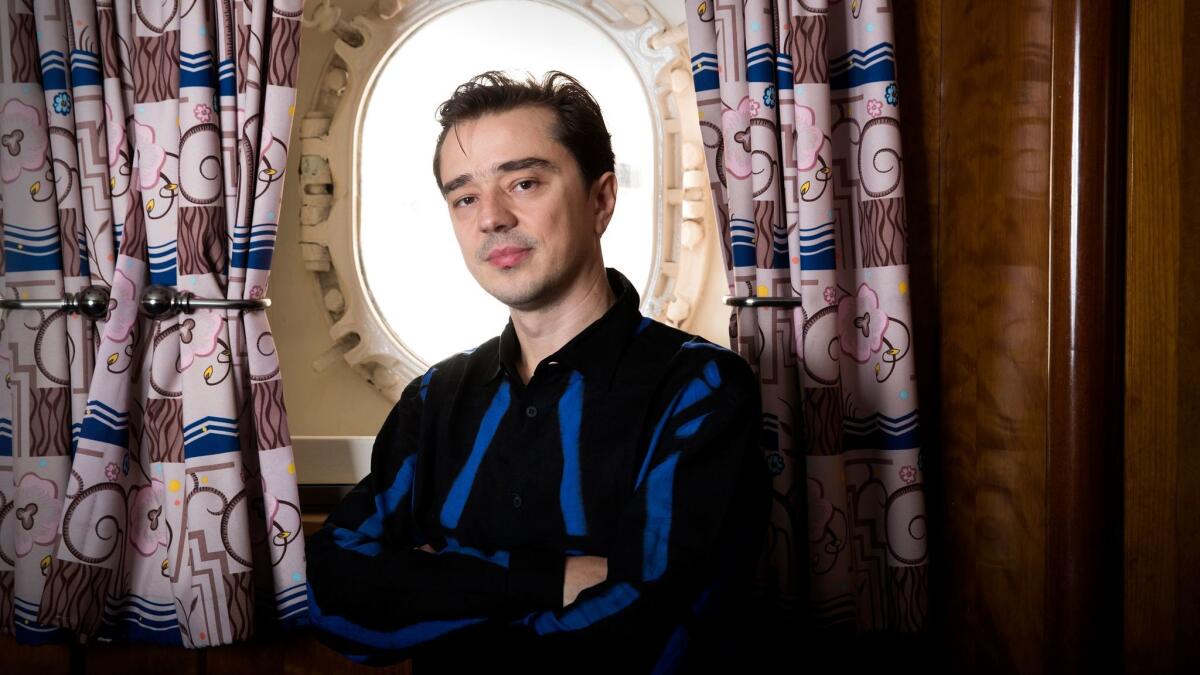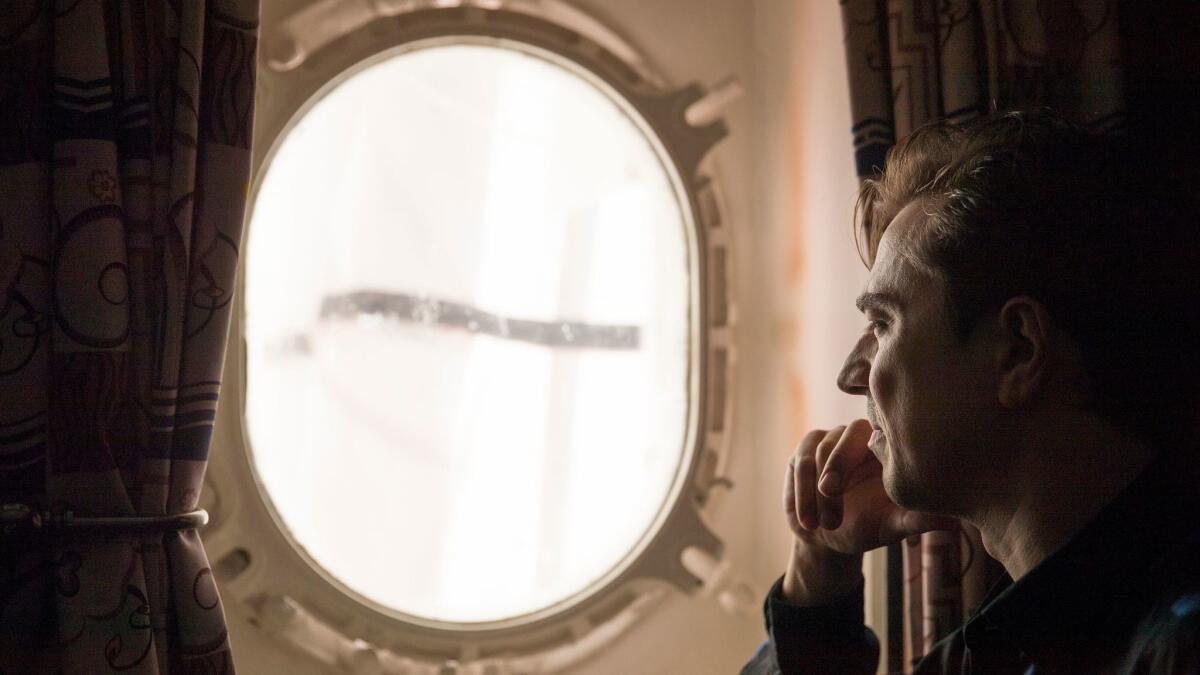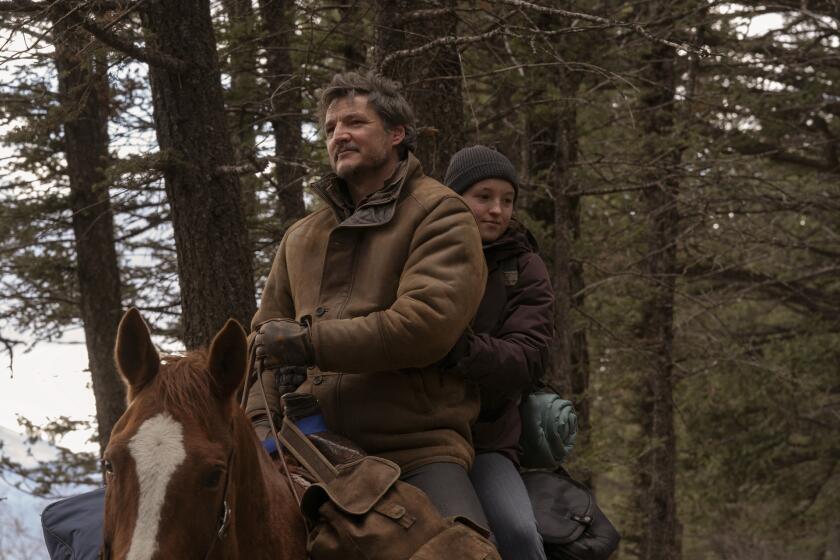‘Darkest Hour’ film editor sees it as a thriller at heart. At stake, the fate of the world

- Share via
Film editor Valerio Bonelli considers himself a slow reader, but the script for 2017’s “Darkest Hour” had him quickly turning pages. Directed by Joe Wright and starring Gary Oldman as Winston Churchill, the film follows the earliest days of the prime minister’s leadership in Great Britain, when it falls to him to decide whether England should broker a deal for peace with the advancing Nazis or stand strong against them even though the chance of victory looks bleak.
“There’s something beautiful about this story of a man who manages to carry a nation behind him in this crazy idea of never surrendering to the Nazi invasion,” Bonelli said.
Born in Naples and raised in Florence, Bonelli studied at the National Film and Television School in London, where he realized that editing suited his personality.
“The dynamic is very small,” he said. “It’s about two or three people, max. And then there’s an element of politics and diplomacy. I’ve always been very good with people and skilled in understanding people’s needs.”

WATCH: Video Q&A’s from this season’s hottest contenders »
While in London, Bonelli found a mentor in editor Pietro Scalia, who gave him his first job as an assistant editor on 2000’s “Gladiator.” Since then, Bonelli has worked on such films as 2013’s “Philomena” and 2016’s “Florence Foster Jenkins.”
How did you approach “Darkest Hour”?
I didn’t think the film felt like a period drama. The film, in moments, feels like a really engaging, fast-paced thriller, where you feel that the conversations are going to dictate the future of the world.
If Britain collapsed in 1940, we would be in a different world. If there would have been a peace agreement [with the Nazis], it would have been a different world. So all these things are discussed in the film, but they’re discussed to create a sense of urgency for a final decision, which is the decision to not surrender.
What was your process?
Joe would come to the cutting room at night and just watch rushes and cut sequences. We would discuss the performance. For instance, there’s a scene where Churchill delivers that great line about “you cannot reason with a tiger when your head is in its mouth.” And the first day of shooting that scene, [peace-seeking foreign secretary] Halifax was screaming, and Churchill was screaming.
So it was a screaming match in the room, and it was really good. But then when I cut it together, I said to Joe, “It would be interesting to have a version of this scene where maybe Halifax doesn’t scream.” And that was in Joe’s mind as well. So he re-shot two close-ups of Halifax delivering exactly the same lines but with a very calm tone. He was firm but not screaming. And the scene took a different shape because of that.

Gary Oldman plays Winston Churchill as he becomes England’s prime minister in “Darkest Hour.”
What were some of your favorite scenes to edit?
I particularly enjoyed cutting all the scenes between Churchill and the king. The film is so intense all the time. And in the three scenes with the king you have a little light relief, and then have the typical British humor coming out. Churchill doesn’t like the king at the beginning. That is a scene where it’s funny because they’re both looking at each other uncomfortably. And then the second scene is where Churchill actually opens himself up and talks about his own personal drama growing up in a family where he never saw his father and his mother.
And the third, the final scene between them, the king comes and helps him in his darkest moment. That was a very challenging scene to cut, partially because of the way it was shot. Every close-up of each character always had the other character in it, so you have to keep continuity.
What were some other challenges?
There was the challenge of carving out the right performance from all these great takes. And normally, with great actors, you look at the first take, and you think, “Oh, that’s brilliant.” And you look at the second and say, “Wow, that’s just even better.” And Gary changes small details. Maybe sometimes it’s the way he moves his cigar. Maybe it’s the way he takes a pause between a line and another, and the way he takes a breath.
Then when you put the film together, from beginning to end, you realize, “Oh, OK, maybe in that one scene the take I thought was the best maybe wasn’t the best, because maybe in that section, he needs to be less sure of himself, less sure of his ideas.” And that is where the beauty of the editing comes.
More to Read
From the Oscars to the Emmys.
Get the Envelope newsletter for exclusive awards season coverage, behind-the-scenes stories from the Envelope podcast and columnist Glenn Whipp’s must-read analysis.
You may occasionally receive promotional content from the Los Angeles Times.









